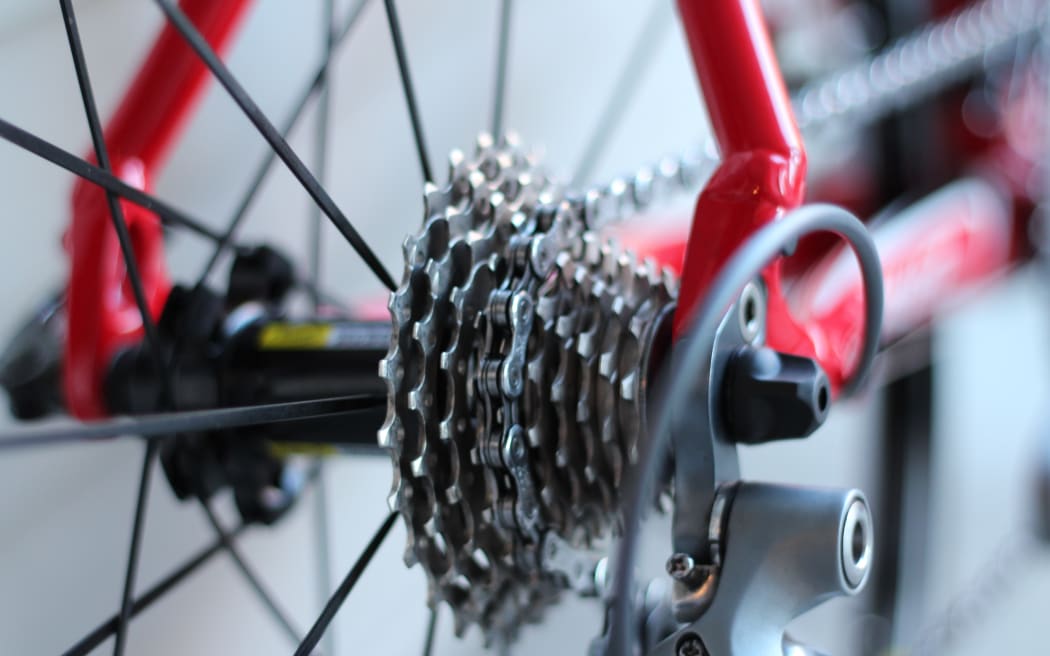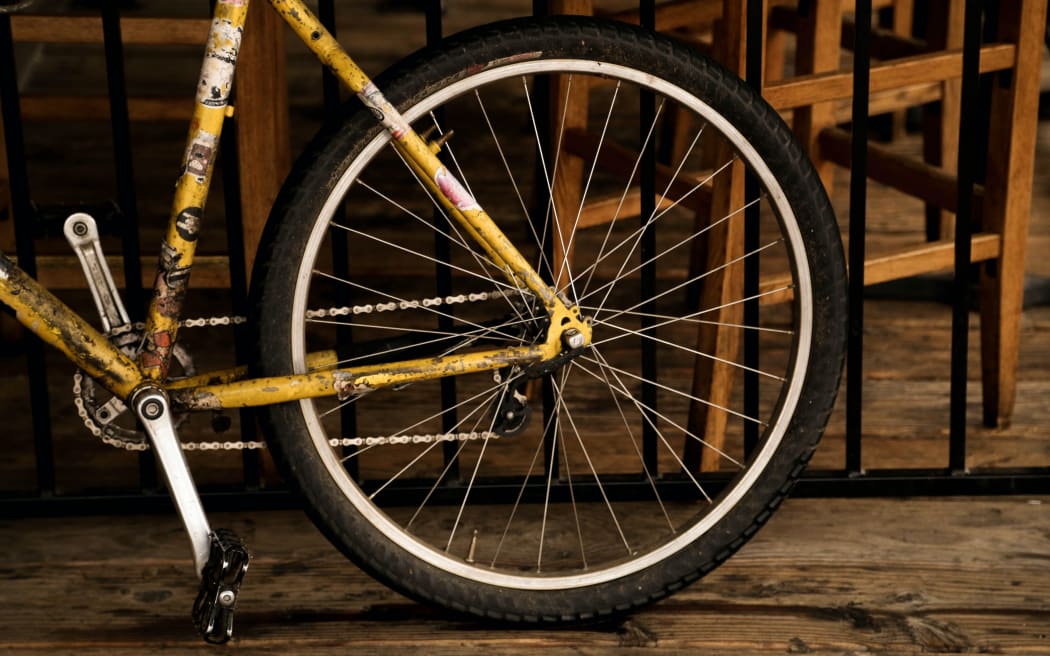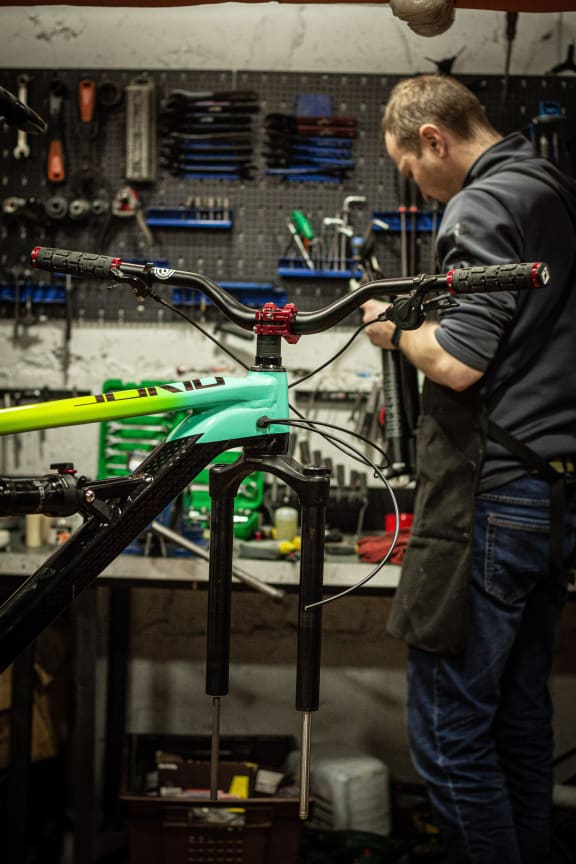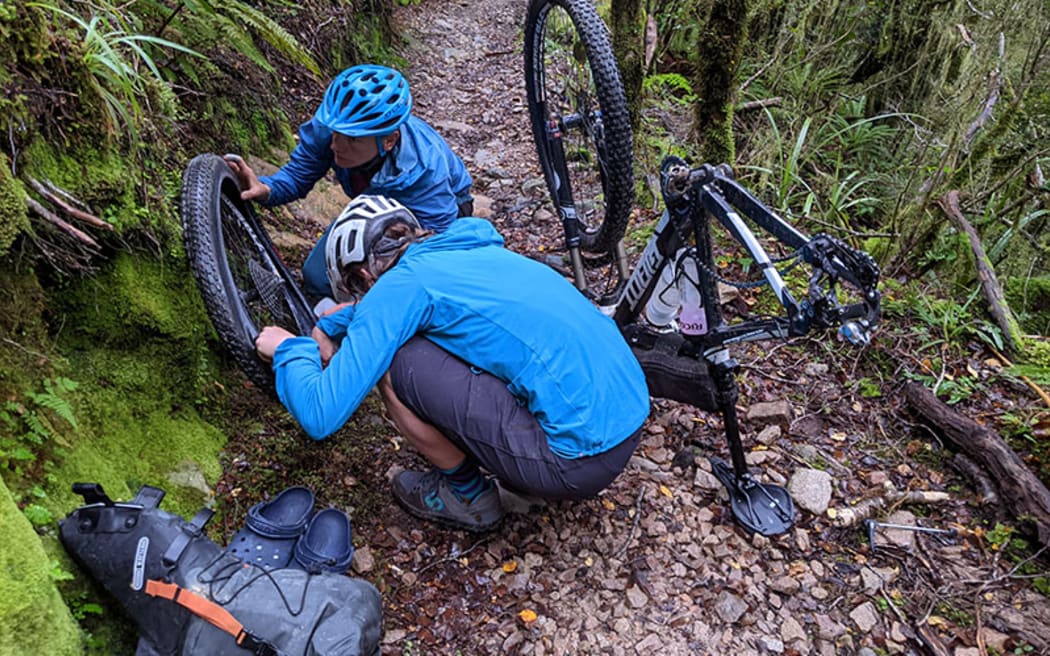There's not much that Josca Craig-Smith doesn't know about bicycles (not to mention bicycle-shaped objects). He's spent more than 20 years fixing bikes of all shapes, types and sizes, and runs a bicycle repair shop in Auckland's Mt Albert.
Craig-Smith joined Jesse Mulligan to answer listener questions about bicycle maintenance, and how to keep your two-wheeler road worthy throughout the year.

Photo: Wayne Bishop/Unsplash
What should we be doing for our own bike before we start thinking about a proper service?
One of the most overlooked things is tyre pressure. Easily, half, if not more than half, of the punctures I repair are caused by people not pumping the tyres.
The bicycle tyre usually goes to way higher pressure than a car tyre. And the narrower the tyre, the higher the pressure and the more frequently it's likely to need pumping up.
Is oiling the chain something that we should worry about?
Definitely. Don't use CRC, don't use WD40. They strip off all the useful oils, it’s mostly solvent in those products. Those ones can also damage, rubber and plastics. So, they can cause damage to your tyres and to the plastic components in your gear system. They pretty much remove all the oil and leave them exposed to the elements.
Use a bicycle chain lubricant. There's a whole lot of different types. But anything that's a bicycle-specific product should be okay.
And when and how often is really a matter of a matter of judgment. But if you see your chain looking dry or rusty, it probably needs a little top up.
It's easy to overdo it and that's okay and just wipe the excess off with a with a dry cotton rag just by wrapping it around the chain and pedalling backwards or something like that to mop up any excess.
And that's also quite important. So that doesn't splatter all over the place and make a horrible mess.
Are chain links universal for all chains, or are they chain-specific?
There are so many different types of chains and usually the connecting link is not universal.
You need to go by primarily the number of gears that the chain is designed for as they come in different widths.
As drive train systems have evolved, chains have gotten narrower, cogs have gotten narrower and they've been compacted closer together and within a fairly small space.
Imagine back in the ‘70s, that amazing 10-speed bicycle was the new thing. It was actually a five-speed with a two-speed front. And then we had 12-speeds, which were two times six. And then we had 18 speeds and so on and so on. They kept packing more gears in and as they did they had to re-engineer and redesign the chain to become narrower and narrower.
Follow the number of cogs on your back wheel and get an appropriate connecting link which usually snaps together by hand, depending on the design, and it needs to also be marked off as okay to work with the brand and model of the chain.
That can all be established by looking at the number and the make stamped onto the chain. Usually, little letters or numbers printed on there. Probably the best thing is to take your bike to the local bike shop.
What are the dos and don'ts when going to a bike shop mechanic?
I would suggest going by what your friends say, if they have had a good experience locally or ask a friend who's into riding bikes and having bike services.
What is the best way to store a bicycle outside?
So much of my work comes from bikes getting rusty and being stored outside and various issues related to that. But absolutely store your bike in the driest most ventilated place that you can. If you have to store it outside, try and choose somewhere that it's not going to be constantly wet.
I store my own bikes outside from time to time as well, but one of the key things is keep them moving. Do keep using them and don't let them sit still in the same place for a long time.
If you get moisture sitting in one spot, a little drip on any given component, but particularly exposed steel components like chains and cogs, they suffer quite quickly.
Keep using your bike, keep lubricating your bike, keep it moving, try and let it ventilate from time to time.
When taking a bike to a shop for a service, what will the shop include in the service? What should they include?
They should probably be doing a complete bolt check, making sure nothing important is coming unscrewed. They should make sure that the bearings are functioning well on the bike; wheel bearings, bottom bracket bearings, and they should also make sure those bearings are locked off.
Bearings can be tightened or loosened. You don't want them to be too tight or too loose, they have to be spot on.
You should also expect the chain to be given a quick clean and relubrication. The gears and brakes should be readjusted - they usually need a little bit of tweaking.
And I would hope that that might include straightforward parts replacement, if the brake pads needed to be replaced.
Then the bike should be given a test drive and the tyres topped up.
And the real-world test ride is really important to my mind to make sure that everything is actually functioning as it should.
How often would you expect a bike to need a service?
For casual use bikes, probably about once a year. If you're commuting to work every day, probably up to four times a year.
I quite often see regular customers having their bikes done two or three times a year.
What is one affordable and impactful upgrade I can buy for my bike?
Some way to carry your stuff. A good quality pannier rack and set of panniers will make the bike infinitely more useful in terms of transport, taking stuff to work and carrying your groceries or anything like that.

Photo: Nielsen Arenas/Unsplash
Should you lock your front wheel and your seat on your bike or just the frame? Do thieves still nab quick-release seats and quick-release front wheels like they did in the ‘90s?
Yes they do. I would gauge your local area because I often feel completely comfortable locking just my frame if I'm out in the daytime, but other people swear by running an extra cable through the front wheel and through the seat and theft prone areas.
I think you should at least have a D lock or a folding bar lock. That's a much more secure way of locking your frame than a cable which is easier to cut through.
If you have quick-release levers on your wheels on your seat, it's sometimes easy to replace those with anti-theft skewers, anti-theft bolts, which saves carrying a whole lot of extra heavy lock paraphernalia.
Why do bike brakes squeak even though there's plenty of material on the disc pads?
Replace the brake pads, if they're squealing all the time including in dry weather. You've got some chain lube or some kind of oil on the brake pads and they will never come right.
That's one thing to really be aware of with any type of disc brakes on a bicycle, the brakes are ultra-sensitive to any lubricant on the braking surfaces. It will cook right into the pad material the fibrous material and they will squeak and not grip.
If that happens, you will need to take it to your local bike shop have everything decontaminated with lots and lots of brake cleaner and scrubbing and possibly a blowtorch on the scrapers.
Important regular maintenance if your bike's got disc brakes: have some paper towels and isopropyl alcohol to wipe down your disc rotors.
And that just takes any light contamination away. Just try and keep that side of the bike clean and free of sticky oil or any visible oil.
What are BSOs?
BSOs are bicycle-shaped objects. We see them every week for the past 20 years that I've been a bicycle mechanic. It's the cheap, not fit-for-purpose bikes that people like to buy from department stores.

Photo: Bohdan Kadun/Unsplash
They do vary in quality from absolutely horrific and unfit and unsafe to kind of passable but quite difficult to work on and difficult to maintain.
And usually, they have some distinct kind of features like plastic brake levers that flex too much, really flexible front suspension forks that give it really poor handling.
So, if you stick your front wheel between your legs and give the handlebars a wiggle, you should see maybe a little bit of flex but some of these BSOs have very, very flexible front forks that just flop around. Those ones usually actually have a sneaky little sticker somewhere on the frame saying 'not for off-road use', despite whether they have knobbly tyres and appearance that matches the mountain bike industry.
Plastic brake levers, press sheet metal, where we should be seeing cast aluminium components and yet really low-grade materials, unbranded components and things like that.
Maintenance tips for E bikes
Maintenance is just like a normal pedal bike, but with added torque added, weight added and stresses in general, so they probably need more frequent maintenance, especially in the brakes and the drive train area.
Mid-drive E bikes with the motor near the pedals driving the bike through the chain system, they will chew through a lot of chains and cogs more frequently than a normal bike.
E bikes usually burn through the brake pads a lot quicker just because of the extra speed, acceleration and deceleration that you have. So, you might be expecting to replace your brake pads and even your brake rotors fairly often.
Is there any way that you use brakes to maximise their life?
You should be using the front and rear brakes evenly, I think a lot of people favour the rear brakes too much.
If they've accidentally flipped themselves over one time, they often scared to use the front brakes at all.
So, the front brake is 60 to 80 percent of your stopping power, it's most of your stopping power, you want that front brake and the rear brake working together most of the time.
The only exception to that rule would be if you have to brake suddenly, while turning a corner, you want to favour the rear brake just like on a motorcycle. Because once your front wheel is turning through a curve, that's going to potentially slide out from under you.
At all other times you're using both brakes together. And that's going to really get the maximum safety, stopping power and where from your braking system.

Puncture repair Photo:

